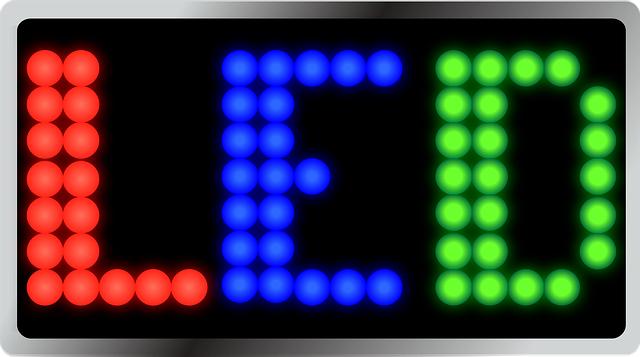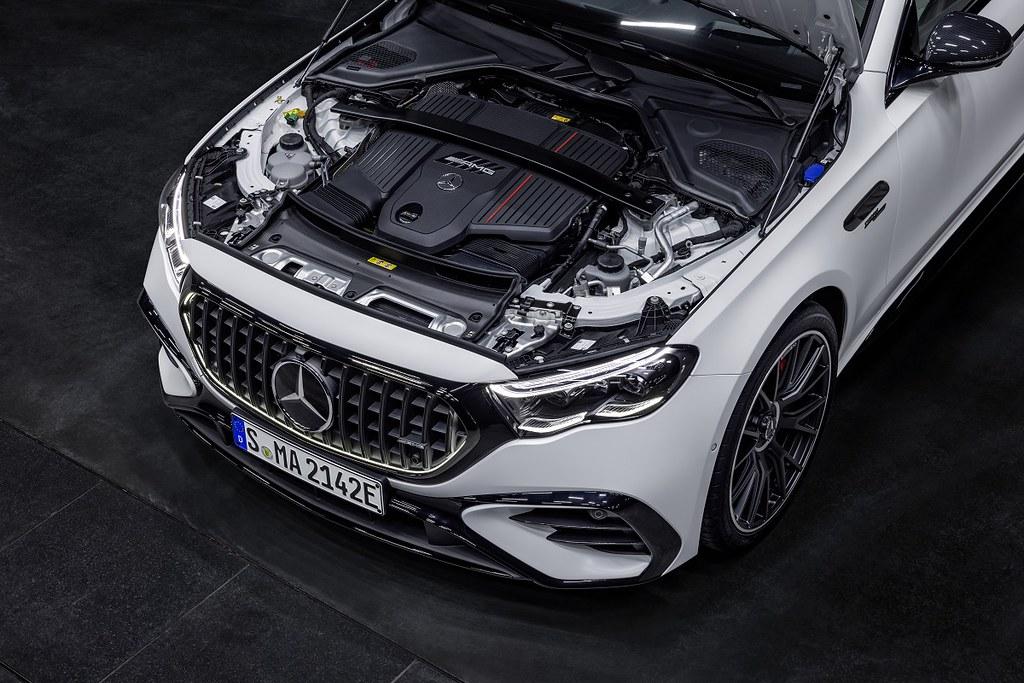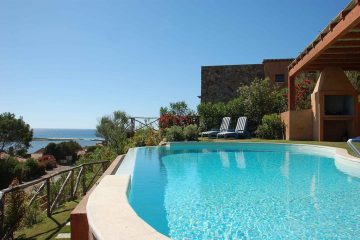Table of Contents
- Understanding the Science Behind LED Technology
- Comparing Energy Consumption: LED Lights vs Traditional Bulbs
- The Environmental Impact of Adopting LED Solutions
- Maximizing Energy Efficiency: Tips for Home and Business
- Evaluating Cost Savings: An Investment in LED Lighting
- Q&A
- Insights and Conclusions


Understanding the Science Behind LED Technology
LED technology stands out for its remarkable efficiency compared to traditional lighting methods. This innovation relies on the principle of electroluminescence, where electric current passes through a semiconductor material to produce light. This means that a significantly lower amount of energy is wasted as heat, which is a common issue associated with incandescent bulbs. Here’s a closer look at why this technology is revolutionizing the way we think about lighting:
- Lower Energy Consumption: LED lights consume up to 80% less energy than incandescent bulbs, making them a practical choice for both residential and commercial applications.
- Longevity: With a lifespan extending beyond 25,000 hours, LED lights reduce the need for frequent replacements, thereby ensuring sustainability and reducing waste.
- Instant-On Capability: Unlike traditional lighting, LEDs provide immediate illumination at full brightness without the delay.
One of the key factors contributing to the efficiency of LED lights is their ability to emit light in a specific direction, which maximizes visibility and reduces the need for reflectors or diffusers that can trap light. This directional quality not only enhances lighting performance but also contributes to energy savings as less light is wasted illuminating unnecessary areas. Here’s a quick comparison that illustrates this enhancement:
| Type of Bulb | Energy Consumption (Watts) | Lifespan (Hours) |
|---|---|---|
| Incandescent | 60 | 1,000 |
| CFL | 15 | 10,000 |
| LED | 10 | 25,000+ |
Moreover, advancements in LED technology have led to the development of smart lighting options that integrate with home automation systems, further enhancing energy efficiency. These smart LEDs can adjust brightness levels based on natural light availability or user preferences, enabling customized lighting experiences while still conserving energy. As consumers become more aware of their carbon footprints, such features are increasingly becoming key factors in the choice of lighting solutions.


Comparing Energy Consumption: LED Lights vs Traditional Bulbs
Understanding the difference in energy consumption between LED lights and traditional bulbs reveals significant advantages for LED technology. LED lights are renowned for their energy efficiency, consuming up to 80% less energy than incandescent bulbs while providing the same level of brightness. This remarkable efficiency not only contributes to lower electricity bills but also decreases the overall demand for power, resulting in a reduced carbon footprint.
In addition to their energy savings, LEDs have a much longer lifespan compared to traditional incandescent bulbs. While an average incandescent bulb lasts approximately 1,000 hours, LED lights can illuminate your space for about 25,000 to 50,000 hours. This means less frequent replacements, further lessening the environmental impact associated with manufacturing, packaging, and transporting light bulbs. Below is a summary comparison of lifespan and energy consumption:
| Type of Bulb | Lifespan (hours) | Energy Consumption (Watts) |
|---|---|---|
| Incandescent Bulb | 1,000 | 60 |
| LED Bulb | 25,000 - 50,000 | 8 – 12 |
Another crucial aspect is the heat emission from these bulbs. Traditional bulbs convert much of their energy into heat rather than light, which not only consumes more electricity but can also lead to higher cooling costs in warm months. In contrast, LED bulbs generate very little heat, making them safer and more efficient. When transitioning to LED technology, users will not only experience immediate financial benefits but also enjoy a more sustainable lighting solution that aligns with modern energy efficiency standards.
The Environmental Impact of Adopting LED Solutions
The transition to LED lighting represents a significant advancement in reducing our energy consumption while simultaneously minimizing our environmental footprint. Compared to traditional incandescent or fluorescent lights, LED solutions consume up to 80% less energy, which not only leads to decreased electricity bills but also lessens the strain on power plants and associated emissions. This energy efficiency translates to fewer fossil fuels being burned, thus contributing to lower greenhouse gas emissions.
In addition to reducing energy consumption, LED lights have a longer lifespan, which diminishes the frequency of replacements and the waste generated from discarded bulbs. Many LEDs last 25,000 hours or more, far exceeding the lifespan of traditional lighting options. This longevity means fewer resources are spent on manufacturing and transporting lighting products, further helping to reduce the overall environmental impact. Moreover, LEDs contain no toxic elements, such as mercury, found in some fluorescent lights, making them a safer choice for both consumers and the environment.
The shift to LED technology also creates opportunities for further advancements in sustainability. For instance, smart LED systems can be integrated with renewable energy sources, such as solar panels, enhancing energy independence and security. By optimizing energy use through smart technologies, we can create environmentally friendly solutions that benefit both individual users and communities. Implementing LED lighting solutions not only fosters a culture of energy conservation but also paves the way for innovative practices that can lead to a greener future.


Maximizing Energy Efficiency: Tips for Home and Business
In the quest for energy efficiency, LED lights stand out as a game changer for both homes and businesses. Their technology uses less electricity compared to traditional incandescent bulbs, translating to significant savings on energy bills. The key to their efficiency lies in the way they produce light—LEDs generate illumination through a process called electroluminescence, which results in far less heat loss. As a result, over time, these lights not only pay for themselves but also contribute to a greener environment by reducing overall energy consumption.
When considering the transition to LED lighting, it’s essential to evaluate the benefits they offer beyond energy savings. For instance, LED lights have a much longer lifespan, often lasting up to 25 times longer than incandescent bulbs. This longevity reduces the frequency of replacements, leading to lower maintenance costs for businesses and less waste for the environment. Additionally, the durability of LEDs makes them a reliable choice for various settings, whether indoor or outdoor, as they can withstand the rigors of everyday use.
To effectively maximize the energy efficiency of LED lights, consider implementing the following tips:
- Choose the correct brightness and color temperature for your space.
- Utilize dimmers and sensors to control usage based on occupancy.
- Replace outdated fixtures with modern LED-compatible options.
- Take advantage of natural light; use LEDs strategically to complement sunlight.
To highlight the advantages further, here’s a simple comparison of energy consumption and lifespan:
| Type of Light | Energy Consumption (Watts) | Lifespan (Hours) |
|---|---|---|
| Incandescent | 60 | 1,000 |
| CFL | 14 | 10,000 |
| LED | 10 | 25,000 |


Evaluating Cost Savings: An Investment in LED Lighting
Investing in LED lighting comes with significant cost-saving benefits that are hard to overlook. Though the initial purchase price may be higher than traditional incandescent or fluorescent bulbs, the long-term savings on energy bills can be substantial. LEDs use up to 75% less energy than incandescent bulbs, significantly reducing overall electricity consumption. With an estimated lifespan of 15,000 to 50,000 hours, compared to just 1,000 hours for incandescent options, the frequency of replacements also sharply decreases.
Additionally, the cost reduction extends beyond energy savings. Maintaining LED lighting systems is cheaper since they are less prone to burnout and require fewer replacements. Organizations transitioning to LED can also benefit from potential tax incentives and rebates offered by various utility companies, which can help mitigate the initial investment cost. It’s essential to consider these factors in a broader perspective of long-term financial planning.
The cumulative effect of these savings can be visualized in a simple comparison. Below is a table that illustrates the potential savings over a typical lifespan of LED lights versus incandescent bulbs:
| Type of Bulb | Cost per Bulb | Average Lifespan (Hours) | Energy Cost Over Lifespan | Total Cost Over Lifespan |
|---|---|---|---|---|
| Incandescent | $1.00 | 1,000 | $60 | $61.00 |
| LED | $10.00 | 25,000 | $15 | $25.00 |
With the calculations highlighted above, the stark difference in total cost can encourage both businesses and homes to consider a switch to LED technology. Transitioning to LED doesn’t just represent a step towards sustainability; it’s a prudent financial strategy, reinforcing the notion that energy efficiency is an investment worth making.




0 Comments